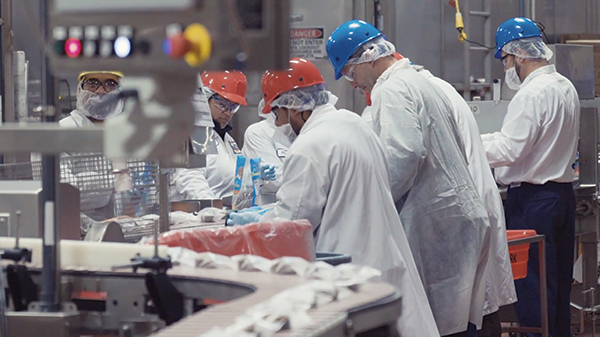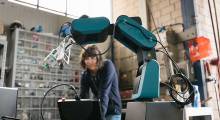Founded in 1913, Wells Enterprises manufactures more than 150 million gallons of ice cream each year at its headquarters in Le Mars, Iowa. Best known for its Blue Bunny ice cream and frozen desserts, the family-owned company employs more than 3,000 people across the country. After deploying a data-driven ergonomics system, the company significantly reduced injury rates while boosting employee retention and satisfaction.
Bill Davis, industrial engineer for Wells, recalls the previous ergonomic issues contributed to musculoskeletal disorder complaints that made up about 50% of workplace injuries. After conducting a Gap Analysis, a practice of comparing the current ergonomics process to a world-class one, they discovered it lacked the elements to drive the improvement process.
“There were times when I would spend 40 hours on the floor watching a task,” Davis says. “What would take me a week before might take me a total of an hour with this system.”
First, an ergonomics specialist (Humantech) performed a comprehensive evaluation of current ergonomic conditions and identified the need for quantifiable risk assessments. After collecting data, the team focused on three key areas of concern. By implementing the supplier’s ergonomics system, Wells can now quantify improvements in comfort and performance, as well as calculate return on investment in ergonomic solutions.
“The first year, we more than doubled our expectation to the number of assessments and improvements, and we’ve reduced our ergonomic injuries tremendously, almost cutting them to zero in the first year,” Davis says. “Our people are going home after these improvements and saying ‘I have family time now, whereas I used to need some downtime to feel better at the end of the day.’ That’s huge. That’s absolutely huge.”
Wells has reduced recordable injuries by 40% and job satisfaction, employee retention and attendance have increased significantly. The system allows workers and managers to quantify jobs objectively, providing numerical data to determine the problem. By ranking problems by severity, the system enables prioritization and quantifies results.
“The people really enjoy participating in it,” he says. “It’s one of the best engagement tools and one of the best continuous improvement tools you could possibly have.”
Article topics








